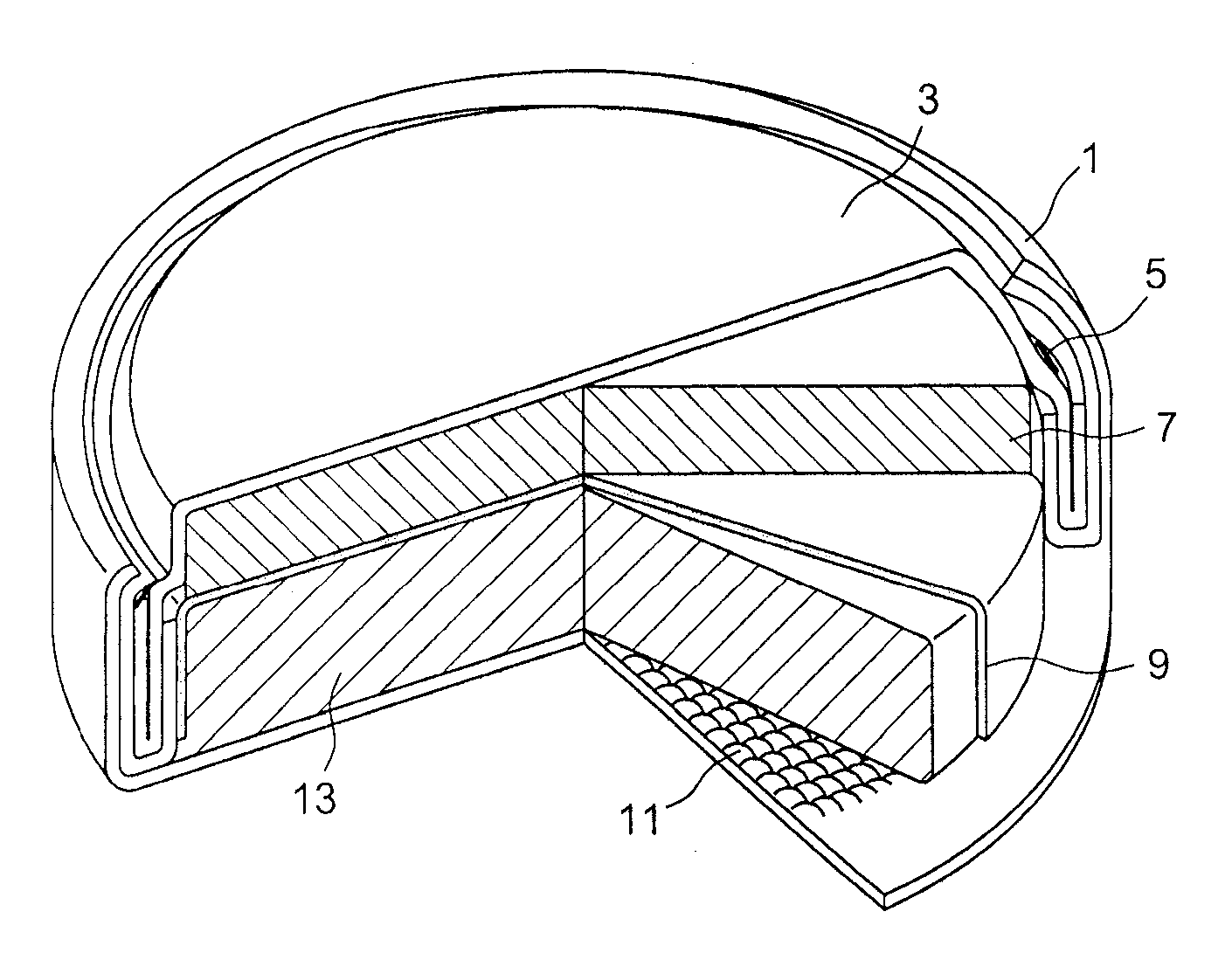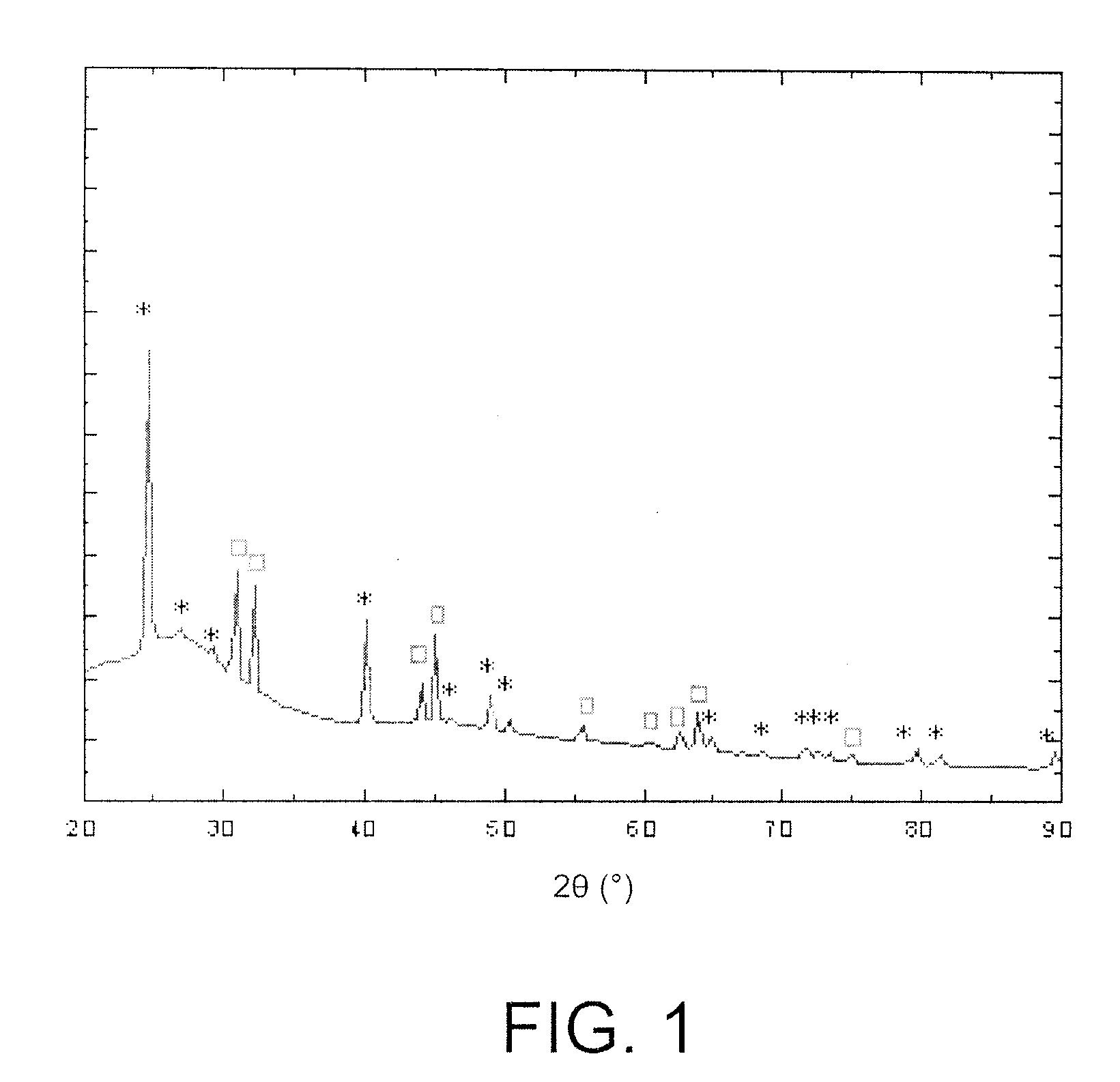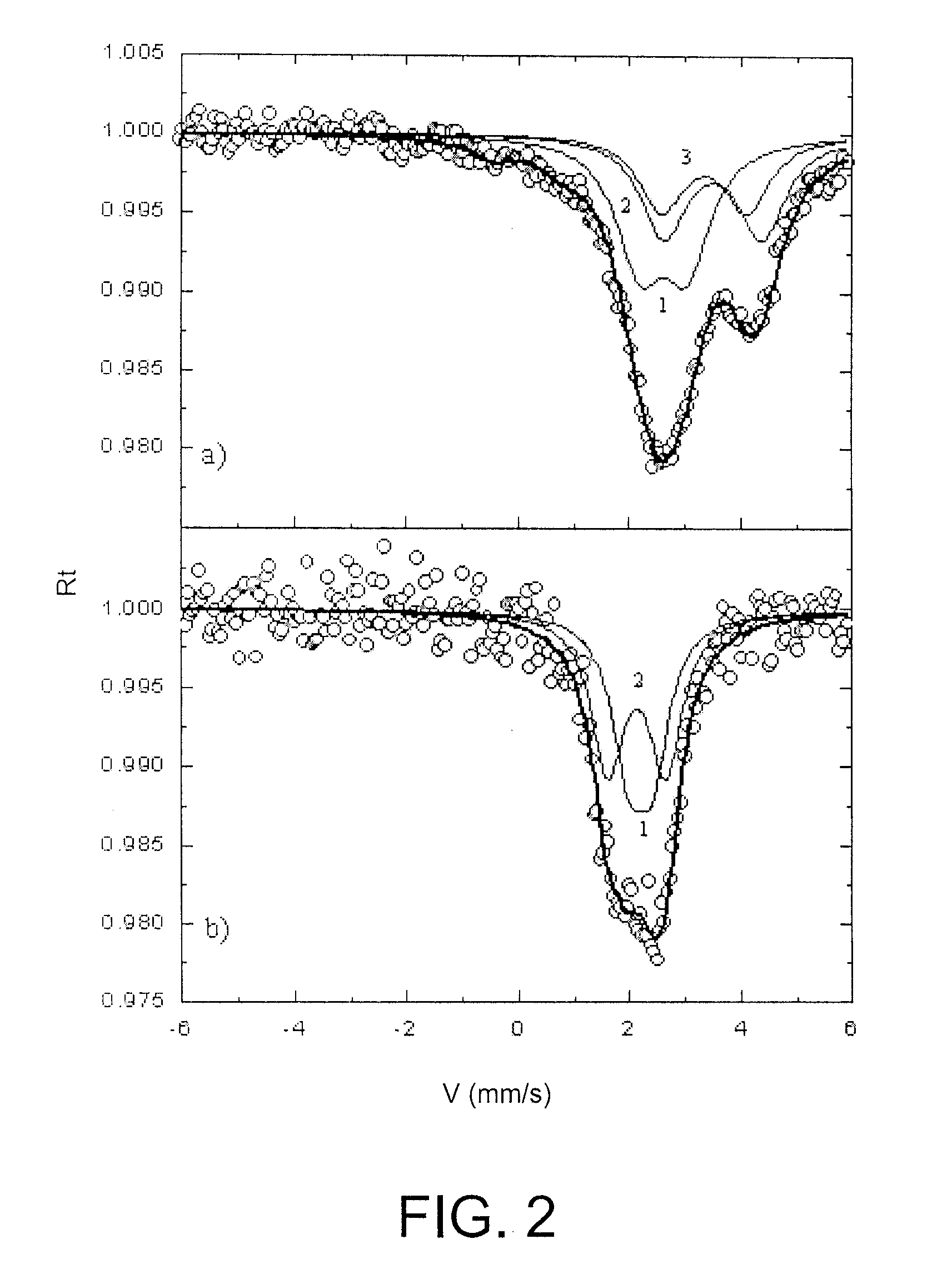Negative Electrode Composite Material, Production Method, Negative Electrode and Lithium-Ion Battery
a negative electrode and composite material technology, applied in the direction of cell components, final product manufacturing, sustainable manufacturing/processing, etc., can solve the problems of limiting the performance of the electrode, the thickness of the tin layer was too low to be usable in practice, and the performance of the batteries that may be produced using these materials, etc., to achieve excellent cyclability, low first cycle capacitance loss, and low reversibility
- Summary
- Abstract
- Description
- Claims
- Application Information
AI Technical Summary
Benefits of technology
Problems solved by technology
Method used
Image
Examples
example 1
Production of a Material According to the Invention Based on Sn and BPO4
[0103] In this example, the negative electrode material is synthesized by the ceramic method using BPO4 and βSn.
[0104] For the synthesis of BPO4, the two precursors H3BO3 and NH4H2PO4 are mixed in stoichiometric proportions and the mixture is ground in an agate mortar for homogenization. The mixture obtained is placed in an aluminium crucible and heated (first heat treatment), after a temperature rise of 1° C. / min, to 300° C. for a period of three hours to obtain a possible liberation of NH3 issuing from the precursor NH4H2PO4 and to permit a complete reaction between the precursors. A period of 6 hours permits good homogenization. A material BPO4 is obtained, in crystalline or amorphous form.
[0105] Tests show that H3BO3 can be replaced by B2O3. Other tests show that NH4H2PO4 can be replaced by P2O5. All combinations between, on the one hand, B2O3 and H3BO3, and on the other hand, P2O5 and NH4H2PO4, are effec...
example 2
Lithium-Ion Test Battery for Electrochemical Characterisation of a Material According to the Invention
[0117] These experiments were conducted with the aim of investigating the electrochemical properties of the materials obtained according to example 1.
[0118] For this purpose, mixtures of powders of the material obtained in example 1 (90% by weight) and carbon black (10% by weight) as an electron conducting anti stabilising material, were pressed into pellets. These pellets form the positive electrode.
[0119] The negative electrode is composed of a sheet of lithium.
[0120] A two-electrode electrochemical cell is formed. The electrochemical tests were performed on SWAGELOCK cells (commercial brand).
[0121] The electrolyte is a solution of ethylene carbonate and dimethyl carbonate (1:3) comprising 1 M of LiPF6.
[0122] The charge / discharge cycles of the cell were carried out in galvanostatic mode at C / 20 (C=1 Li mol−.h−) in the potential range between 1.5 and 0.40 V with regard to lit...
example 3
Production of a Material According to the Invention Based on Si and BPO4
[0129] This example allows the production of a material according to the invention in which the active phase consists of Si and the support phase is BPO4. In this example, the proportions are 0.4 BPO4 / Si.
[0130] The method employed is that of example 1. The proportions of Si and BPO4 are respectively 797 mg and 1203 mg.
[0131] Electrochemical curves comparable to those of tin are obtained.
[0132] The material obtained is tested as in example 2. It comprises an active phase Si and a support phase BPO4 (proportions 0.4 BPO4 / Si).
[0133] The results confirm the superiority of the compounds of this invention over the TCO, particularly concerning reversibility.
PUM
| Property | Measurement | Unit |
|---|---|---|
| temperature | aaaaa | aaaaa |
| temperature | aaaaa | aaaaa |
| temperature | aaaaa | aaaaa |
Abstract
Description
Claims
Application Information
 Login to View More
Login to View More - R&D
- Intellectual Property
- Life Sciences
- Materials
- Tech Scout
- Unparalleled Data Quality
- Higher Quality Content
- 60% Fewer Hallucinations
Browse by: Latest US Patents, China's latest patents, Technical Efficacy Thesaurus, Application Domain, Technology Topic, Popular Technical Reports.
© 2025 PatSnap. All rights reserved.Legal|Privacy policy|Modern Slavery Act Transparency Statement|Sitemap|About US| Contact US: help@patsnap.com



